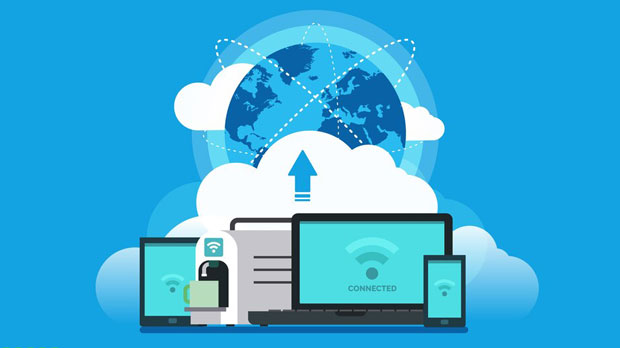When it comes to online activities such as managing accounts or conducting business, the issue of IP address security and prevention of account bans becomes a significant concern. Dynamic Residential IPs, which change frequently, can be beneficial in certain situations but are also more likely to trigger security protocols. Static Residential IPs, on the other hand, offer consistency and are less likely to be flagged for suspicious activity, providing better account protection. In this article, we will explore the advantages and disadvantages of both IP types in detail, helping users understand which is better suited for preventing account bans. Understanding Dynamic Residential IPsDynamic Residential IPs refer to IP addresses that are assigned temporarily by an Internet Service Provider (ISP) and can change frequently, typically every time a device reconnects to the network. This type of IP is commonly used by most home users and is considered “residential” because it appears as if it is coming from a regular household rather than a data center or proxy server.Advantages of Dynamic Residential IPs:1. Cost-Effective: Since dynamic IPs are standard for most residential internet plans, they tend to be more affordable and easy to acquire, making them an attractive option for users on a budget.2. Anonymity: The constantly changing nature of dynamic IPs makes it difficult for online systems to track the user’s actions over time. For some users, this adds a layer of anonymity when browsing the web or managing online accounts.3. General Use: Dynamic IPs work well for day-to-day internet browsing and activities that don’t require consistent identification. This includes personal browsing, streaming, and general online activities.Disadvantages of Dynamic Residential IPs:1. Frequent IP Changes: While dynamic IPs provide a sense of anonymity, the frequent changes can also be a double-edged sword. Many online platforms, especially social media and gaming websites, may flag frequent IP changes as suspicious activity, potentially leading to account bans or temporary suspensions.2. Inconsistent Access: Users may experience issues with access to specific online services that require consistent IP addresses. Frequent switching can disrupt sessions or cause problems with two-factor authentication systems, making it difficult to maintain ongoing connections.3. Risk of Detection: If multiple users in the same area share the same dynamic IP pool, online systems may detect patterns of usage that seem unnatural, increasing the chances of being flagged for suspicious behavior.The Benefits of Static Residential IPsIn contrast to dynamic IPs, static Residential IPs remain the same over time. Once assigned to a user, the static IP address will not change, offering a consistent online identity. This consistency can have several benefits, particularly for users concerned with preventing account bans or maintaining uninterrupted service.Advantages of Static Residential IPs:1. Consistency and Reliability: The most significant advantage of a static Residential IP is its stability. A user will always be recognized by the same IP address, which is crucial for activities requiring reliability, such as running online businesses, managing multiple accounts, or conducting financial transactions.2. Reduced Risk of Account Bans: Since the IP address remains the same, it is easier for online platforms to verify the user’s identity. The consistent nature of static IPs reduces the likelihood of being flagged for unusual activities, which are common with dynamic IPs.3. Improved Security: Static IPs make it easier to establish secure connections for sensitive online activities. For example, setting up secure remote connections, VPNs, or dedicated servers often requires a static IP for better performance and safety.4. Preferred for Multi-Account Management: For users who manage several accounts across different platforms, static Residential IPs offer the consistency necessary to avoid triggering security protocols. The stable connection is essential for ensuring that different accounts remain linked to a single, trustworthy IP address.Disadvantages of Static Residential IPs:1. Higher Cost: Static IPs generally come at a higher price, as they are often offered as a premium service by ISPs. For individuals or businesses with limited budgets, this could be a significant drawback.2. Vulnerability to Targeted Attacks: While static IPs offer consistency, they also make the user more predictable. Malicious actors can target static IP addresses if they know the address will not change, potentially exposing the user to cyber-attacks or hacking attempts.3. Limited Anonymity: The permanence of a static IP reduces anonymity online. While this is not an issue for many users, those seeking to hide their true identity may find static IPs less appealing compared to dynamic IPs that provide greater obfuscation.Choosing the Right IP Address for Account ProtectionWhen deciding whether to use a dynamic or static Residential IP, it is essential to weigh the specific needs of the user. For activities that require high levels of security and consistency, such as managing an online business or accessing sensitive accounts, a static Residential IP is generally the better choice. It minimizes the risk of being flagged for suspicious activity, offers more reliable access, and ensures a stable connection.However, for casual online activities, such as general browsing or streaming, dynamic IPs may still provide enough anonymity and flexibility without the risk of long-term bans or suspensions. Additionally, dynamic IPs are a cost-effective solution for users who do not require the same level of access or security.Best Practices for Preventing Account Bans with IP ManagementRegardless of whether a user opts for a dynamic or static Residential IP, there are several best practices for minimizing the risk of account bans:1. Use a VPN: A VPN can mask your IP address, whether dynamic or static, making it difficult for websites to track your activity. This extra layer of protection is particularly useful for users managing multiple accounts or performing actions that could trigger security protocols.2. Avoid Excessive Account Activity: Too much activity in a short amount of time, such as logging in from multiple devices or locations, can raise red flags. Whether using dynamic or static IPs, moderation is key to avoid detection.3. Regularly Rotate IPs (for Dynamic IP Users): For users with dynamic IPs, rotating IPs periodically through a proxy service or VPN can help avoid suspicion. This ensures that the same IP address is not used for extended periods, reducing the chances of being flagged.4. Monitor IP Reputation: Many online platforms maintain blacklists or IP reputation systems. Users should be mindful of their IP’s reputation to avoid being associated with malicious activities that could lead to account bans.In conclusion, whether a Dynamic Residential IP or a Static Residential IP is better suited for preventing account bans largely depends on the user's specific needs. For consistent and secure access, especially when managing multiple accounts, a static Residential IP offers clear advantages. However, dynamic IPs provide a cost-effective and flexible option for users who do not require the same level of security. Ultimately, the right choice depends on the type of online activity, security needs, and budget. By following best practices and choosing the appropriate IP type, users can better protect their accounts and avoid unnecessary disruptions.
Sep 08, 2025



































































